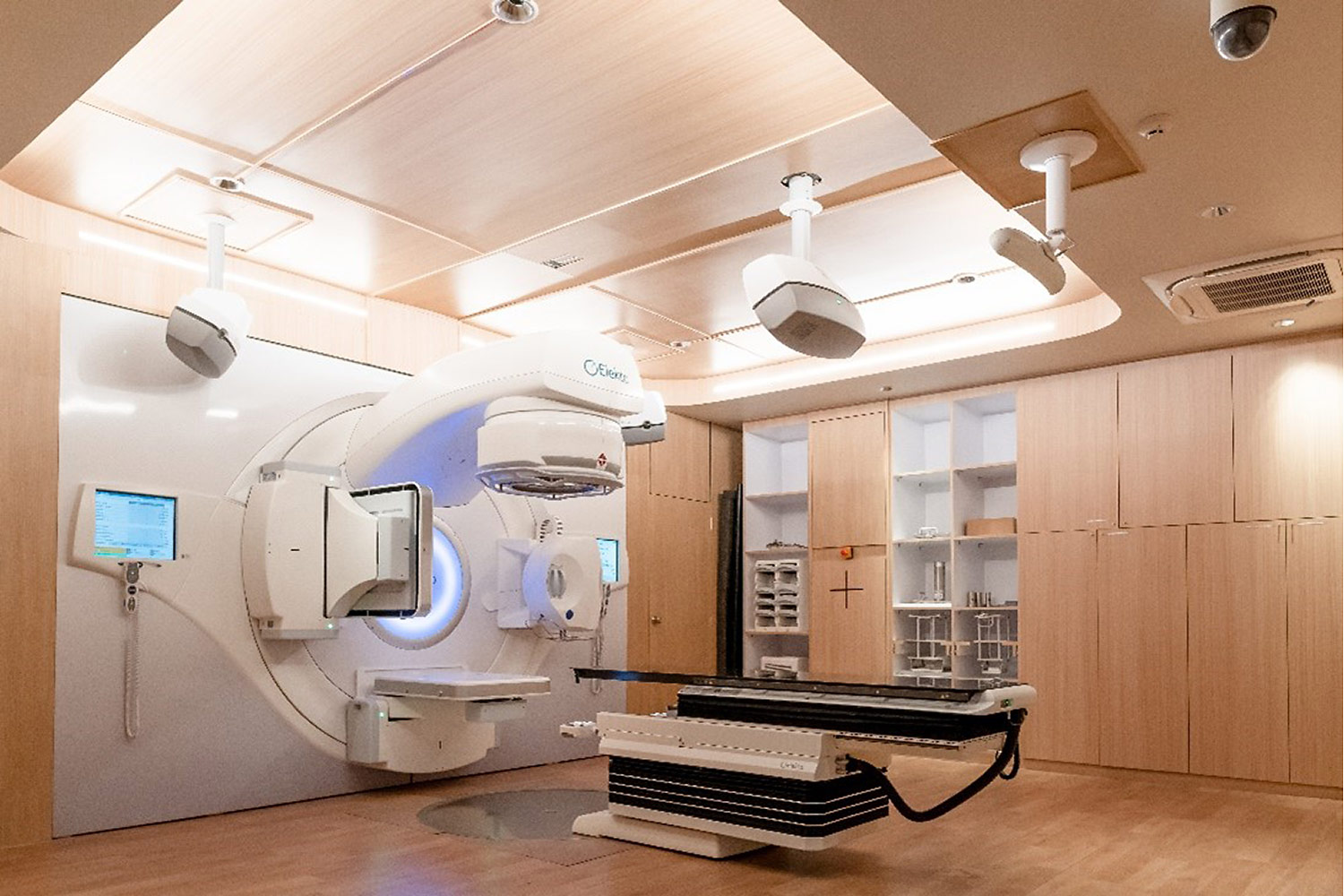
There were about 200,000 new cases of cancer in Thailand in 2020. Recent advances in the fields of surgical oncology, medical oncology, and radiation oncology have immensely improved the results of cancer treatment. Even with the best multidisciplinary treatment, in more than half of the patients, cancer will recur and require further treatment with the aim of palliation to improve the quality of life and hopefully prolong life. Radiation therapy is an important cancer treatment modality with curative intent or palliative aims. Modern advanced radiation therapy techniques make it possible to deliver high doses of radiation to the tumour while minimising the doses to surrounding normal tissue. As a result, tumour control in curative and palliative settings is far superior to that in the past.
Modern radiation therapy utilises a high-energy radiation beam to kill cancer cells whereas diagnostic radiology uses low-energy X-rays and dose. Radiation therapy can treat all types and stages of cancer, alone or in combination with surgery and chemotherapy, based on the type and stage of cancer. The combinations can be concurrent or given in sequences. There are two main types of radiation therapies: external radiation and brachytherapy.
Linear accelerator, or LINAC, is the most advanced external radiation therapy machine for treating cancer. It can deliver photons or high-energy X-rays and electron beams with high precision. This advanced, high-precision radiotherapy uses computers to control X-ray accelerators and deliver precise radiation doses to a tumour.
With the invention of the computer-controlled multi-leaf collimator integrated into the modern LINAC system, modern radiation technology can treat tumours as small as 5 mm. to as large as 40 cm. with high precision. The correct amount of radiation is directed to the tumours while surrounding normal tissue receives minimal radiation. Advanced external radiation treatment techniques commonly used are: Intensity-modulated radiation therapy (IMRT), Volumetric modulated arc therapy (VMAT), Image-guided radiation therapy (IGRT), Stereotactic radiosurgery (SRS), and Stereotactic body radiotherapy (SBRT).
The application of each technique depends on the location, size and type of tumour to be treated, which will be carefully chosen by the radiation oncologist to give the best possible treatment outcome. For example, image-guided radiation therapy (IGRT) is commonly selected to treat tumours that tend to move, such as a lung cancer nodule that moves with respiration, using the 4D gating technique that synchronises the radiation beam to the same phase as the respiratory cycles.
The LINAC system uses imaging technology to scan the tumour before or during treatment, and by comparing these scans to the simulation reference images, the radiation oncology team can make fine adjustments to your position and the radiation beams to precisely deliver radiation to the tumour while avoiding healthy tissue. The LINAC system scans the tumour before or during treatment, and by comparing these scans to the simulated reference images, the radiation oncology team may make minor modifications to your position and the radiation beams to accurately deliver radiation to the tumour while avoiding healthy tissue.
External radiation treatment is typically given consecutively 5 days a week with 2 rest days. Sometimes, it can be 3 times a week. The course of radiation usually takes 4-7 weeks. Elekta’s Versa HD™ paired with the Catalyst+ HD high precision patient positioning system enables precise radiation treatment in the same position from session to session throughout the course of radiation therapy. Radiation therapy for palliative purposes is given over a shorter period of one to two weeks. However, in stereotactic radiosurgery, the radiation is delivered in a single session.

Brachytherapy is a type of internal radiation therapy in which seeds, ribbons, or capsules that contain short-range radioactive sources are placed inside or near the tumour during the treatment session and taken out of the body after treatment. Therefore, no radioactive source remains in the patient. Normal tissues in the path of the beam are not irradiated by necessity, as in external beam radiation therapy.
Brachytherapy is one of the most precise forms of radiotherapy that can deliver a very high radiation dose to the tumour with much less radiation to the normal surrounding tissue, resulting in better tumour control with fewer complications. It is given in several sessions, a few days or weeks apart. For a patient with prostate cancer, brachytherapy is a befitting treatment. It is convenient and safe and does not require hospital admission.
Unlike treatments with prostate surgery, the patient will not have to stay in the hospital with an indwelling urinary catheter for a week or more and can be up and about and resume his normal routine activities, even having sex the day after the procedure. The complications from brachytherapy are mild and, in most cases, non-existent. Elekta’s Flexitron™ brachytherapy afterloader unit ensures the most sophisticated and safest brachytherapy procedure possible with a more streamlined process and efficiency.
Modern radiation therapy treatment is a complex process involving planning and delivery made possible by advanced digital imaging and sophisticated computing technology, controlling every step of the delivery of radiotherapy from a high-energy linear accelerator source. When coupled with input and expertise from the radiation oncology team, patients receive faster, more optimised, safe and precise treatments with an improved quality of life.
Author: Dr. Yongyut Kongthanarat, Radiation Oncologist, MedPark Hospital
Series Editor: Katalya Bruton (info@dataconsult.co.th), Healthcare Content Editor and Director, Dataconsult Ltd. Dataconsult’s Thailand Regional Forum at Sasin provides seminars and extensive documentation to update business on future trends in Thailand and the Mekong Region.







